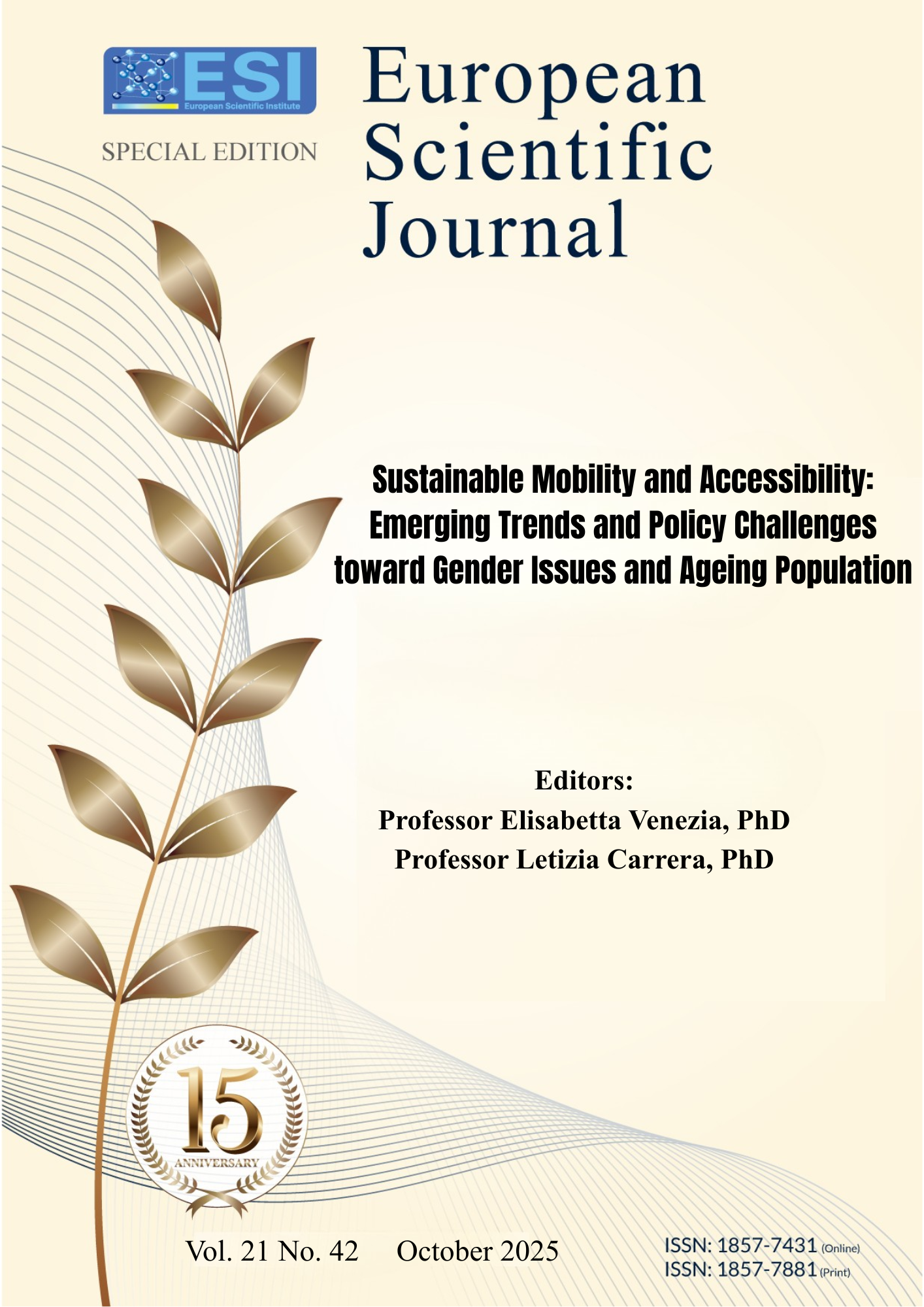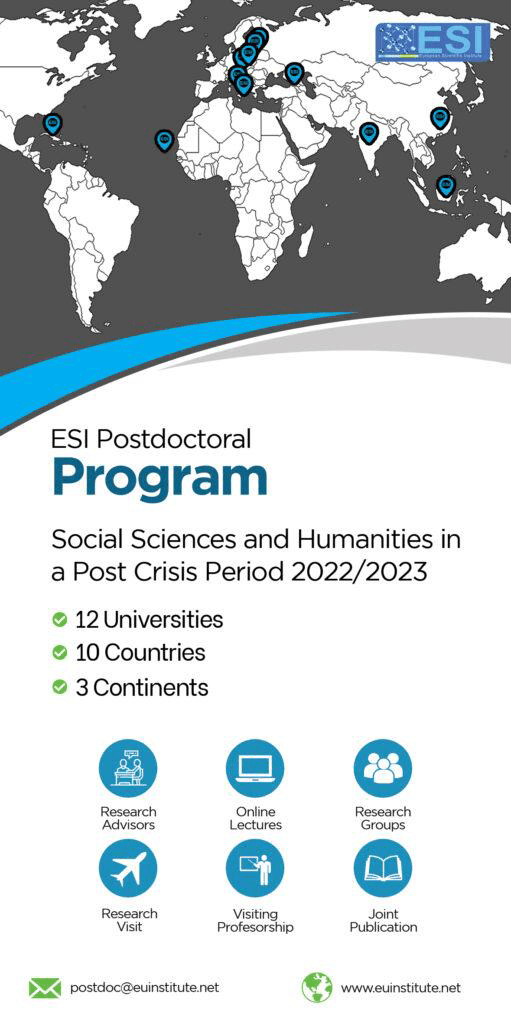Mobility on Demand and Transport Services for the Elderly: Challenges and Policy Solutions
Abstract
The utilization of public transportation by the elderly is examined in this study according to their varied socioeconomic backgrounds. It explores how newly implemented Mobility on Demand (MOD) public transport scenarios can either mitigate or exacerbate mobility inequalities, and why residents in some locations experience greater or more limited accessibility to public transportation. The focus is on geographic accessibility rather than specific individual demographic characteristics in assessing whom MOD public transportation can effectively serve, based on data collected through interviews. The findings suggest that an MOD system that uses MaaS (Mobility as a Service) and a stop-based mode (where passengers must wait at bus stops) has a higher chance of closing mobility gaps for low-income passengers. Improving spatial justice, particularly for the elderly from socioeconomically challenged backgrounds, is the goal of this article.
Downloads
Metrics
PlumX Statistics
References
2. Enright, T. (2019). Transit justice as spatial justice: learning from activists. Mobilities, 14 (5), 665–680. https://doi.org/10.1080/17450101.2019.1607156.
3. Feigon, S. & Murphy, C. (2016). Shared mobility and the transformation of public transit. Transit Cooperative Research Program, Transportation Research Board, National Academies of Sciences, Engineering, and Medicine. ISBN: 978-0-309-44582-5, DOI: 10.17226/23578.
4. Guzman, L.A., Oviedo, D., Arellana, J., & Cantillo-Garcia, V. (2021). Buying a car and the street: Transport justice and urban space distribution. Transportation Research Part D: Transport and Environment, 95, 102860 https://doi.org/10.1016/j.trd.2021.102860.
5. Hasselwander, M., Bigotte, J.F., Antunes, A.P., & Sigua, R.G. (2022). Towards sustainable transport in developing countries: Preliminary findings on the demand for mobility-as-a-service (MaaS) in metro Manila. Transportation Research Part A: Policy and Practice. 155, 501–518.
6. Huang, G., Qiao, S., & Yeh, A.-G.-O. (2021). Spatiotemporally heterogeneous willingness to ridesplitting and its relationship with the built environment: A case study in Chengdu, China. Transportation Research Part C: Emerging Technologies 133, 103425.
7. Karner, A., London, J., Rowangould, D., & Manaugh, K. (2020). From transportation equity to transportation justice: Within, through, and beyond the state. Journal of Planning Literature. 35, 440–459. https://doi.org/10.1177/0885412220927691.
8. Kong, H., Zhang, X., & Zhao, J. (2020). How does ridesourcing substitute for public transit? A geospatial perspective in Chengdu. China. Journal of Transport Geography 86, 102769.
9. Li, S.A., Zhai, W., Jiao, J., & Wang, C.K. (2022). Who loses and who wins in the ride-hailing era? A case study of Austin, Texas. Transport Policy 120, 130–138.
10. Litman, T. (2013). Transportation affordability: Evaluation and improvement strategies. Victoria Transport Policy Institute. https://www.vtpi.org/affordability.pdf.
11. Litman, T. (2017a). Evaluating transportation equity. Victoria Transport Policy Institute.
12. Litman, T. (2017b). Transportation affordability. Victoria Transport Policy Institute.
13. Maharani, N. (2025). Effect of Public Transportation Accessibility on Employment Rates in Indonesia. International Journal of Sociology.
14. Martens, K. (2017). Transport justice: designing fair transportation systems, New York/London, Routedge.
15. McKane, R.G. & Hess, D.J. (2022). Ridesourcing and urban inequality in Chicago: Connecting mobility disparities to unequal development, gentrification, and displacement. Environment and Planning A: Economy and Space 54 (3), 572–592.
16. Nazari Adli, S. & Donovan, S. (2018). Right to the city: Applying justice tests to public transport investments. Transp. Policy 66, 56–65. https://doi.org/10.1016/j.tranpol.2018.03.005.
17. Nazari Adli, S., Chowdhury, S., & Shiftan, Y. (2019). Justice in public transport systems: A comparative study of Auckland, Brisbane, Perth and Vancouver. Cities 90, 88–99. https://doi.org/10.1016/j.cities.2019.01.031.
18. Pereira, R.H.M., Schwanen, T., & Banister, D. (2017). Distributive justice and equity in transportation. Transp. Rev. 37 (2), 170–191. https://doi.org/10.1080/01441647.2016.1257660.
19. Qiao, S. & Yeh, A.-G.-O. (2021). Is ride-hailing a valuable means of transport in newly developed areas under TOD-oriented urbanization in China? Evidence from Chengdu City. J. Transp. Geogr. 96, 103183.
20. Qiao, S. & Yeh, A.-G.-O. (2023). Is ride-hailing competing or complementing public transport? A perspective from affordability. Transportation Research Part D: Transport and Environment. 114, 103533.
21. Qiao, S. & Yeh, A.-G.-O-. (2023a). Mobility-on-demand public transport toward spatial justice: Shared mobility or Mobility as a Service, Transportation Research Part D 123, 103916.
22. Rawls, J. (1999). A Theory of Justice, Revised Edition. Harvard University Press.
23. Shaheen, S. & Chan, N. (2016). Mobility and the sharing economy: Potential to facilitate the first-and last-mile public transit connections. Built Environment. 42 (4), 573–588.
24. Smith, G., Sochor, J., & Karlsson, I.C.M. (2018). Mobility as a Service: Development scenarios and implications for public transport. Research in Transportation Economics. 69, 592–599. https://doi.org/10.1016/j.retrec.2018.04.001.
25. Vanoutrive, T. & Cooper, E. (2019). How just is transportation justice theory? The issues of paternalism and production. Transportation Research Part A: Policy and Practice. 122, 112–119. https://doi.org/10.1016/j.tra.2019.02.009.
26. Venezia, E. (2011). Sustainability in cities: greater responsibility and efficiency. Venezia, E. (ed.), Urban sustainable mobility, 2011, Milan, Franco Angeli, ISBN 978-88-568-3742-1.
27. Venezia, E. (ed.) (2019). The decision-making process for infrastructural investment choices, Milan, Franco Angeli, ISBN 978-88-971-9081-1.
28. Venezia, E. (2023). Hedonic prices and economic evaluations of green areas and transport infrastructures incidences on real estate values, AIP Conference Proceedings 2928, 130009, https://doi.org/10.1063/5.0170814.
29. Verlinghieri, E. & Schwanen, T. (2020). Transport and mobility justice: Evolving discussions. Journal of Transport Geography. 87, 102798 https://doi.org/10.1016/j.jtrangeo.2020.102798.
30. Victoria Law Foundation (2019). The Principles of Justice: Equality. Fairness & Access A collection of case studies, Melbourne.
31. Weckström, C., Mladenović, M.N., Ullah, W., Nelson, J.D., Givoni, M., & Bussman, S. (2018). User perspectives on emerging mobility services: Ex post analysis of Kutsuplus pilot. Research in Transportation Business & Management. 27, 84–97.
32. Xu, Y., Santi, P., & Ratti, C. (2022). Beyond distance decay: Discover homophily in spatially embedded social networks. Annals of the American Association of Geographers. 112 (2), 505–521.
33. Zhai, W., Liu, M., & Peng, Z.-R. (2021). Social distancing and inequality in the United States amid COVID-19 outbreak. Environment and Planning A: Economy and Space 53 (1), 3–5.
34. Zhao, P. & Li, S. (2016). Restraining transport inequality in growing cities: Can spatial planning play a role? International Journal of Sustainable Transportation. 10 (10), 947–959.
35. Zhao, P. & Li, P. (2019). Travel satisfaction inequality and the role of the urban metro system. Transport Policy 79, 66–81.
Copyright (c) 2025 Elisabetta Venezia

This work is licensed under a Creative Commons Attribution 4.0 International License.








